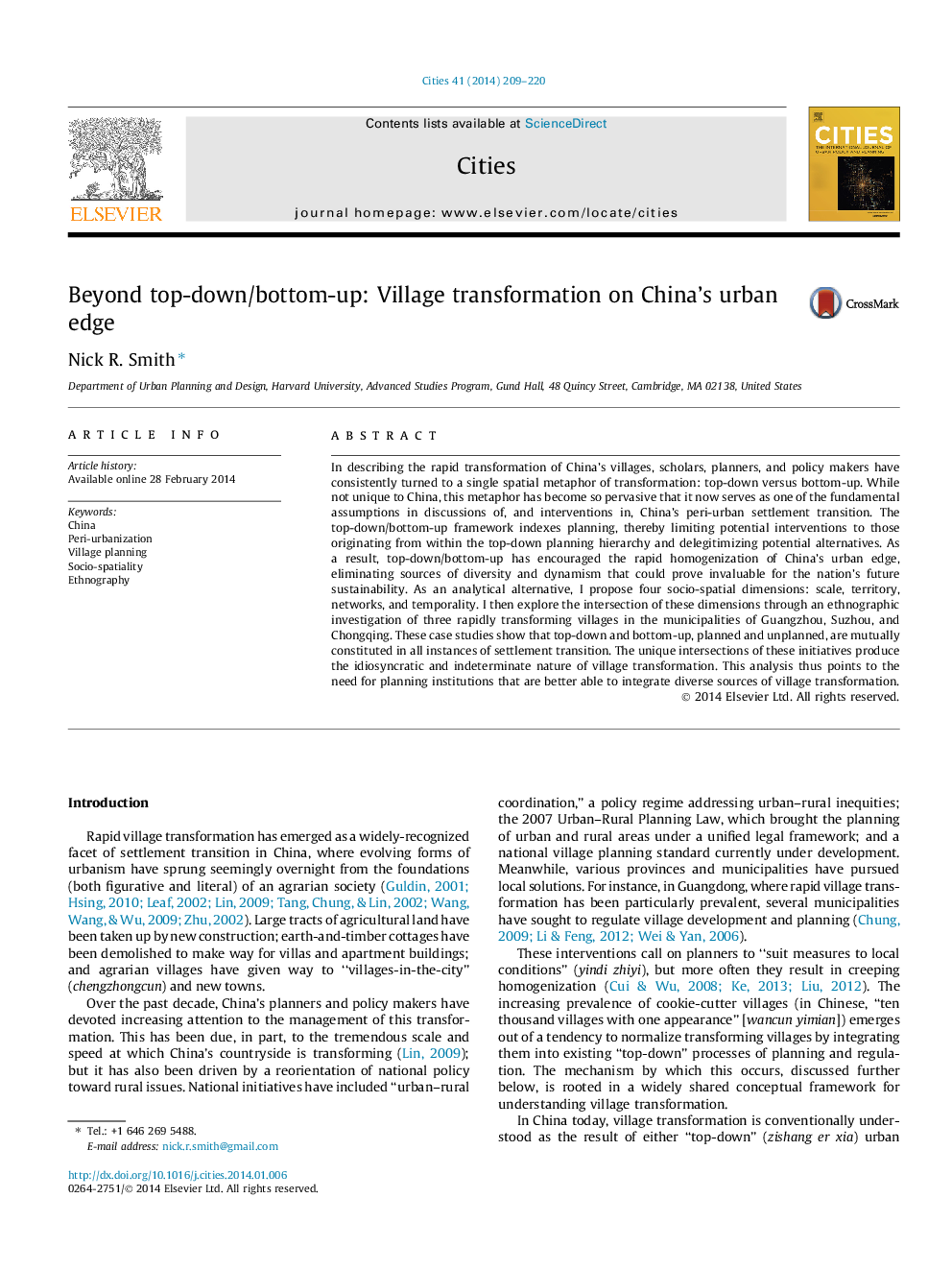| Article ID | Journal | Published Year | Pages | File Type |
|---|---|---|---|---|
| 1008282 | Cities | 2014 | 12 Pages |
•Top-down/bottom-up pervades analyses of China’s peri-urban transformation.•This static framework biases intervention and encourages peri-urban homogenization.•Combining scale, territory, networks, and temporality enables more nuanced analyses.•Village case studies show the idiosyncrasy and contingency of settlement transition.•Planning institutions should be rescaled in order to more closely reflect village diversity.
In describing the rapid transformation of China’s villages, scholars, planners, and policy makers have consistently turned to a single spatial metaphor of transformation: top-down versus bottom-up. While not unique to China, this metaphor has become so pervasive that it now serves as one of the fundamental assumptions in discussions of, and interventions in, China’s peri-urban settlement transition. The top-down/bottom-up framework indexes planning, thereby limiting potential interventions to those originating from within the top-down planning hierarchy and delegitimizing potential alternatives. As a result, top-down/bottom-up has encouraged the rapid homogenization of China’s urban edge, eliminating sources of diversity and dynamism that could prove invaluable for the nation’s future sustainability. As an analytical alternative, I propose four socio-spatial dimensions: scale, territory, networks, and temporality. I then explore the intersection of these dimensions through an ethnographic investigation of three rapidly transforming villages in the municipalities of Guangzhou, Suzhou, and Chongqing. These case studies show that top-down and bottom-up, planned and unplanned, are mutually constituted in all instances of settlement transition. The unique intersections of these initiatives produce the idiosyncratic and indeterminate nature of village transformation. This analysis thus points to the need for planning institutions that are better able to integrate diverse sources of village transformation.
